Comparing Popular Chronographs Across Brands
The chronograph has been around for nearly two centuries. A French watchmaker named Nicolas Mathieu Rieussec first invented the complication back in 1821. However, the chronograph didn’t become more mainstream until the development of the automatic chronograph just 50 years ago in 1969. Now, here’s where the history of the chronograph gets a bit more controversial. There are a number of different manufacturers who like to lay claim to designing the first automatic chronograph. Zenith was the first to announce it, and Seiko was the first to release it exclusively in the Japanese market.
However, it was a special group of watchmakers who called their endeavor Project 99 that were the first to bring it to the global market in August 1969. Since then, the chronograph has become one of the most accessible and popular complications in the industry. Whether you have a modest budget or whether the sky’s the limit, there’s a chronograph for you. Here, we’ve complied a few of our favorites.
Bell & Ross Heritage Chronograph
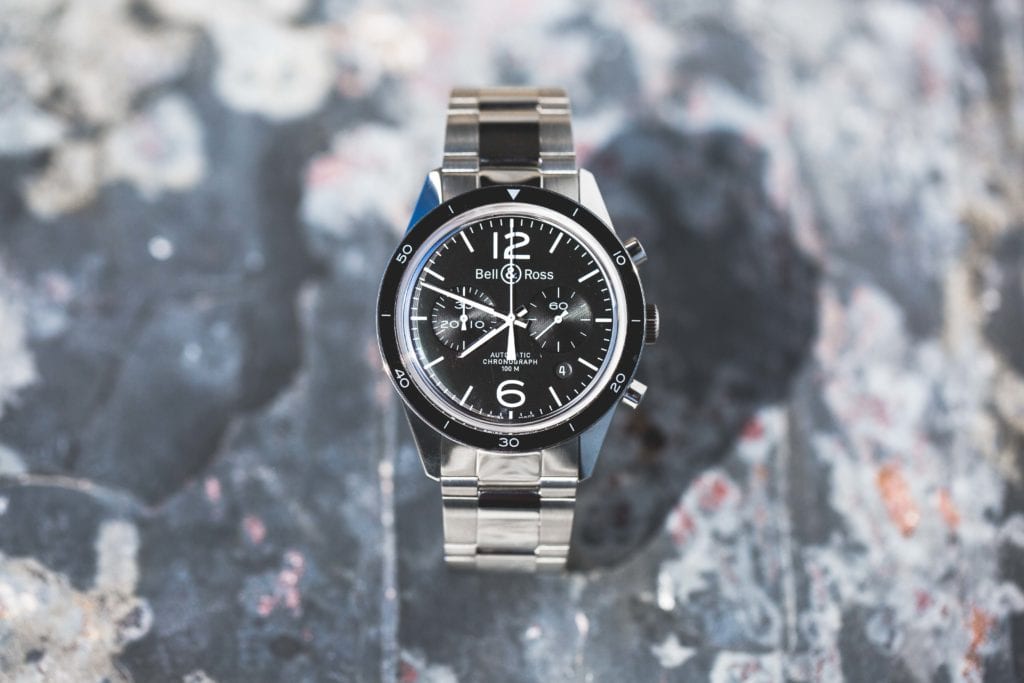
As the name suggests, the Bell & Ross Heritage Chronograph draws from the brand’s early designs. This two-register chronograph features an aged dial with artificial patina effects and a domed crystal. These vintage elements are contrasted by modern ones, like an oversized 43mm construction and sporty rubber strap. Under the hood, of course, is an automatic chronograph movement: the ETA 2824. It comes equipped with a 36-hour power reserve, and you can view it through the exhibition caseback.
Breitling Transocean
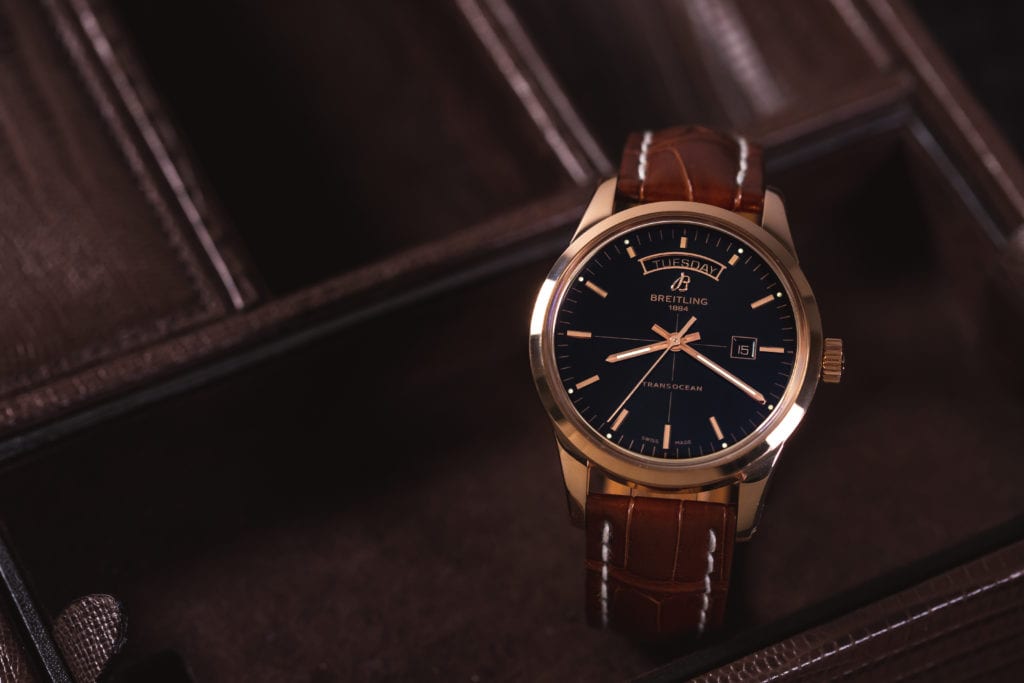
The Breitling Transocean follows the brand’s popular Superocean. Similar to the Heritage Chronograph, the Transocean gives a nod to Breitling models past. These vintage-inspired elements include features like the typeface on the dial and the iconic Breitling “B” logo. In contrast to the Heritage Chronograph, the Transocean comes equipped with three registers – two chronograph and one small seconds – in a tri-compax layout. When the Transocean first debuted in 1958, models housed manual chronograph movements. However, following the creation of the automatic chronograph movement, the Transocean got an upgrade. Today, we see modern touches in the collection like the Caliber B01 automatic movement and the oversized 43mm case.
Baume & Mercier Capeland Chronograph
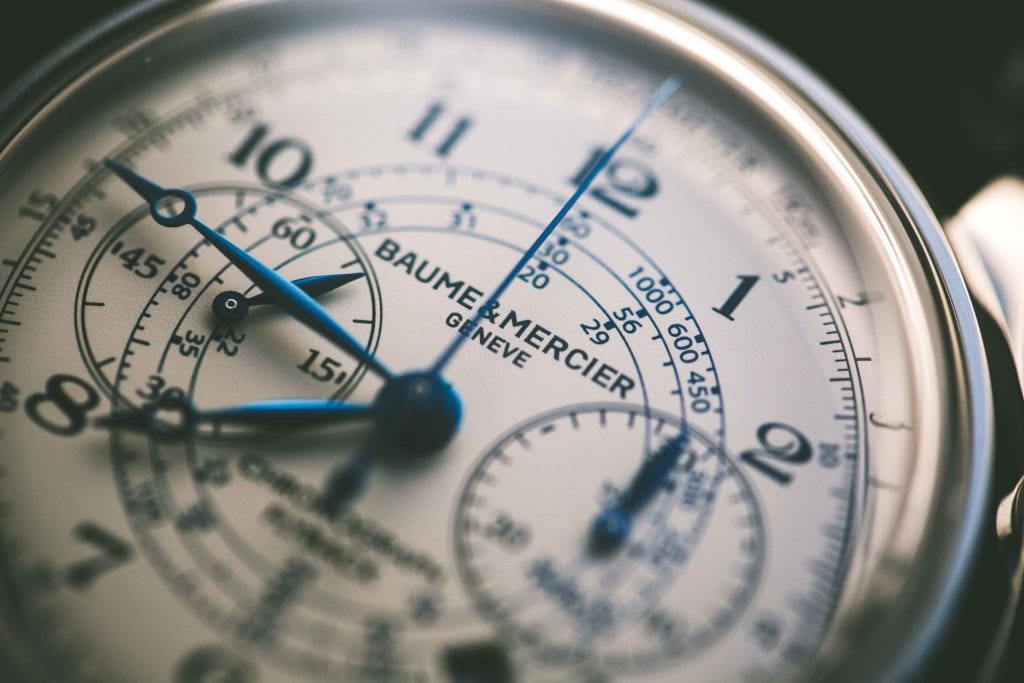
Baume & Mercier’s Capeland Chronograph is a much newer addition than the Heritage Chronograph and Transocean. However, the collection still draws from the brand’s chronographs of the 1940s. The Capeland line first appeared in the 1990s for a short stint. Then, the brand relaunched the collection in 2011. Throwback elements include the typeface of the hour markers and shape of the hands. Much like the Heritage Chronograph and Transocean, contemporary elements come in the form of the 44mm case and automatic movement. The Capeland houses the ETA Caliber 7750 with a 42-hour power reserve.
TAG Heuer Monaco
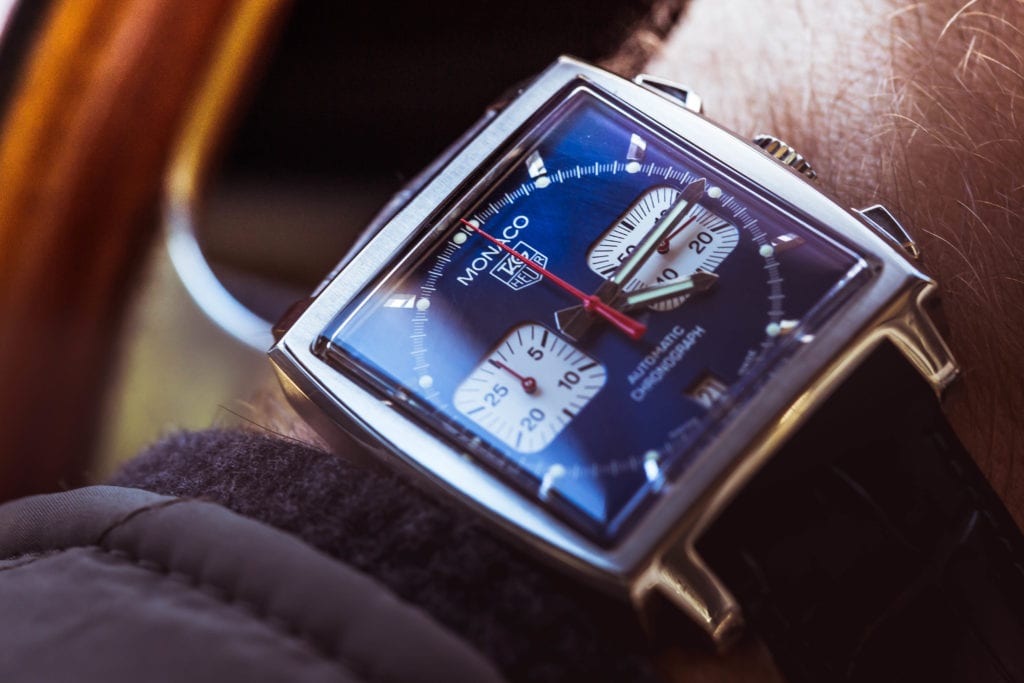
TAG Heuer was among the brands who contributed to Project 99 and produced the famous Caliber 11 movement. They initially debuted it in existing models like the Carrera and the Autavia. However, the brand ultimately wanted to design a new model specifically for the movement, and the Monaco was born. The Monaco boasts a one-of-a-kind design with a unique, water resistant square case. The combination of the case shape, movement, and capabilities was a world-first when it launched in 1969. Like the Heritage Chronograph and Capeland Chronograph, the Monaco features two-registers. Now, it houses the Caliber 12 self-winding mechanical movement, which features a 40-hour power reserve.
Piaget Polo S Chronograph
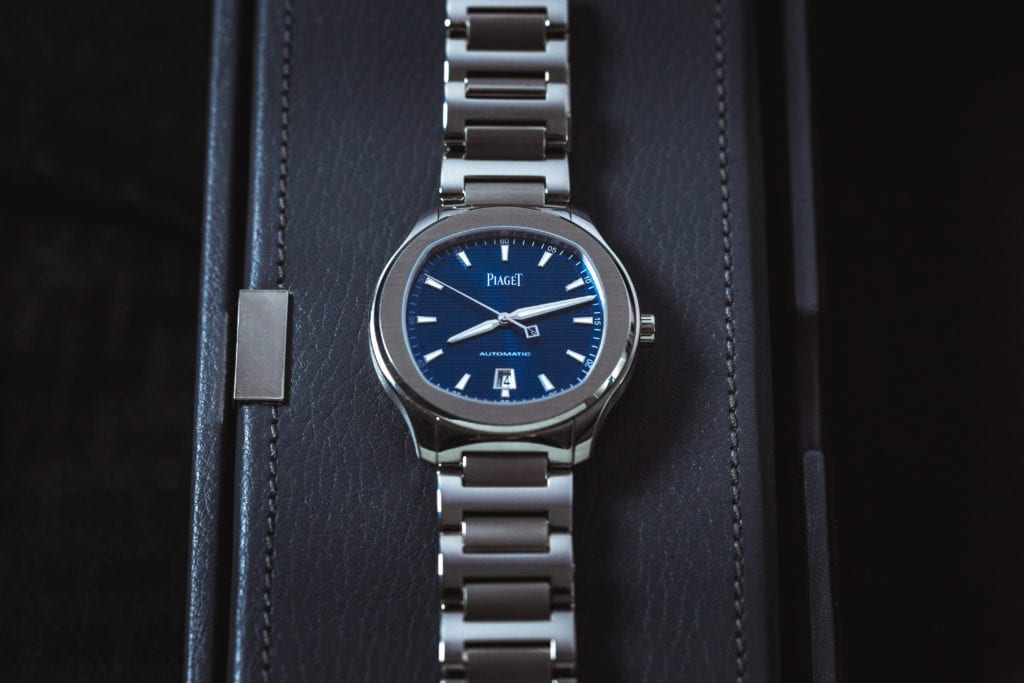
Models in Piaget’s Polo S collection are instantly recognizable for their distinctive bracelet and dial, which feature a bold horizontal pattern. They also boast a unique cushion shaped case. Though stainless steel is relatively common for most brands, the Polo S is Piaget’s first to feature the popular metal. The chronograph variation comes equipped with two registers, like the Heritage Chronograph, Capeland Chronograph, and Monaco. The Polo S wouldn’t be complete without the Caliber 1160P self-winding mechanical movement, which offers a 50-hour power reserve.
Rolex Daytona
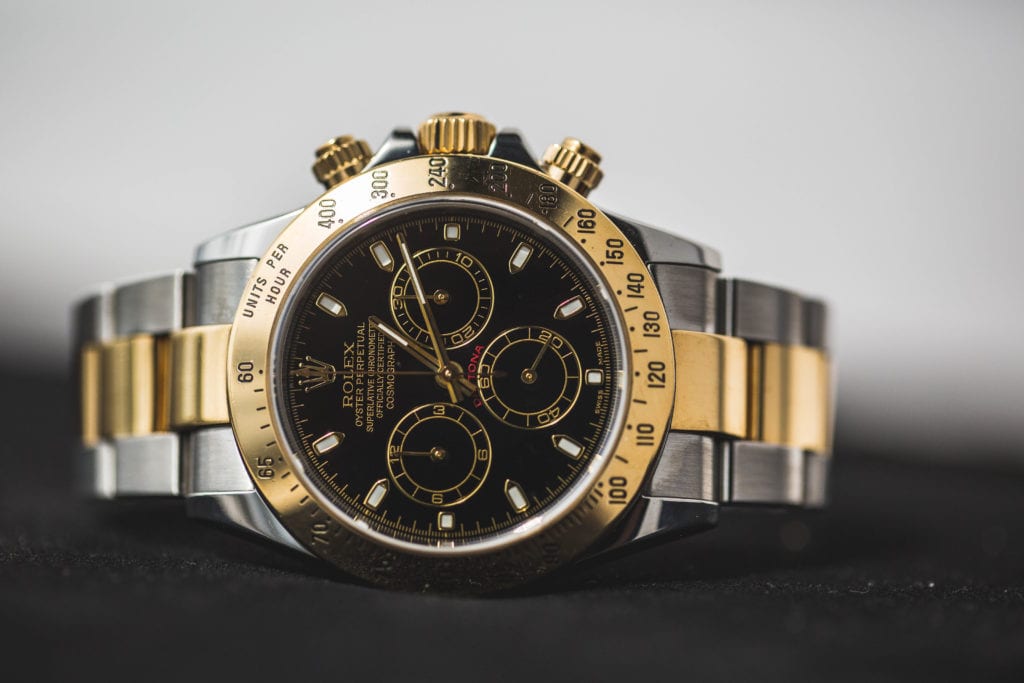
Of course, one of the most highly coveted chronograph models on the market is the Rolex Daytona. Like the Transocean, the Daytona first launched before the development of the automatic chronograph. Rolex initially began working on a line of mechanical chronographs in the 1950s. However, the Daytona marked the brand’s first official collection of chronographs. Even before the addition of the automatic chronograph movement, the Daytona introduced a number of firsts for the brand. It was Rolex’s first model to feature a tachymeter scale engraved on the bezel as opposed to printed on the dial. The Daytona was also the first to showcase a panda dial – a white dial with three contrasting black subdials.
When Rolex decided to make the switch to an automatic chronograph movement, they looked to Zenith’s iconic El Primero movement. It took over half a decade for Zenith to present their first design. Still, Rolex came back with hundreds of modifications. However, by 1988, they had finally unveiled the first automatic Daytona. Today, the collection has gotten yet another upgrade. Now, models feature Rolex’s in-house Caliber 4130 movement with a 72-hour power reserve.
Get More Articles Like This in Your Inbox
We're constantly creating great content like this. So, why not get it delivered directly to your inbox? By subscribing you agree to our Privacy Policy but you can unsubscribe at any time.





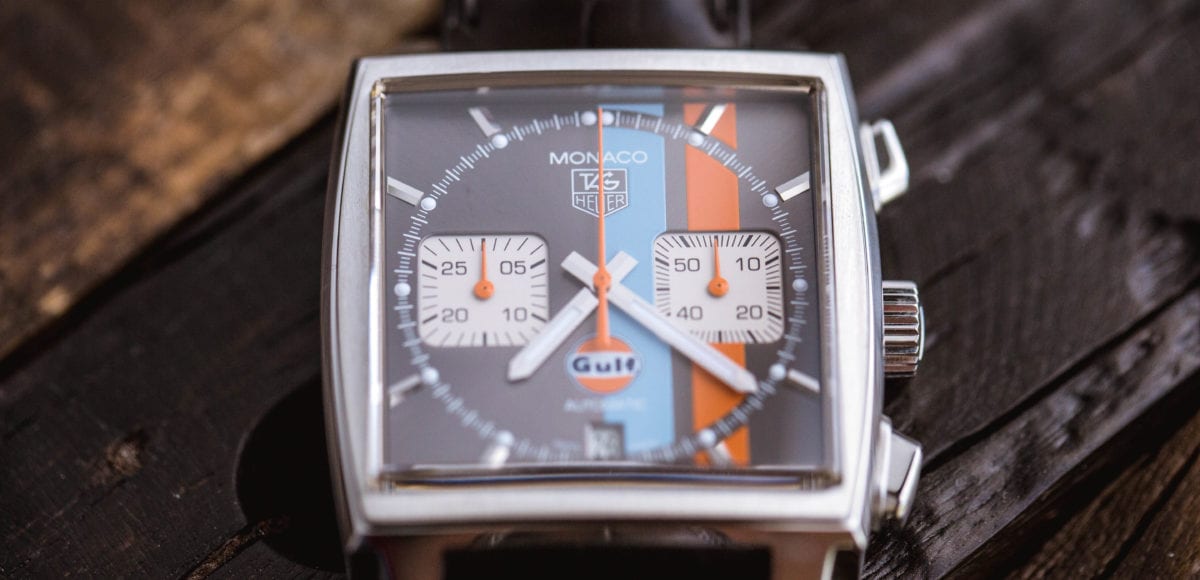

Alvin | September 22, 2019
|
What about the moonwatch, omega spEedmaster professional